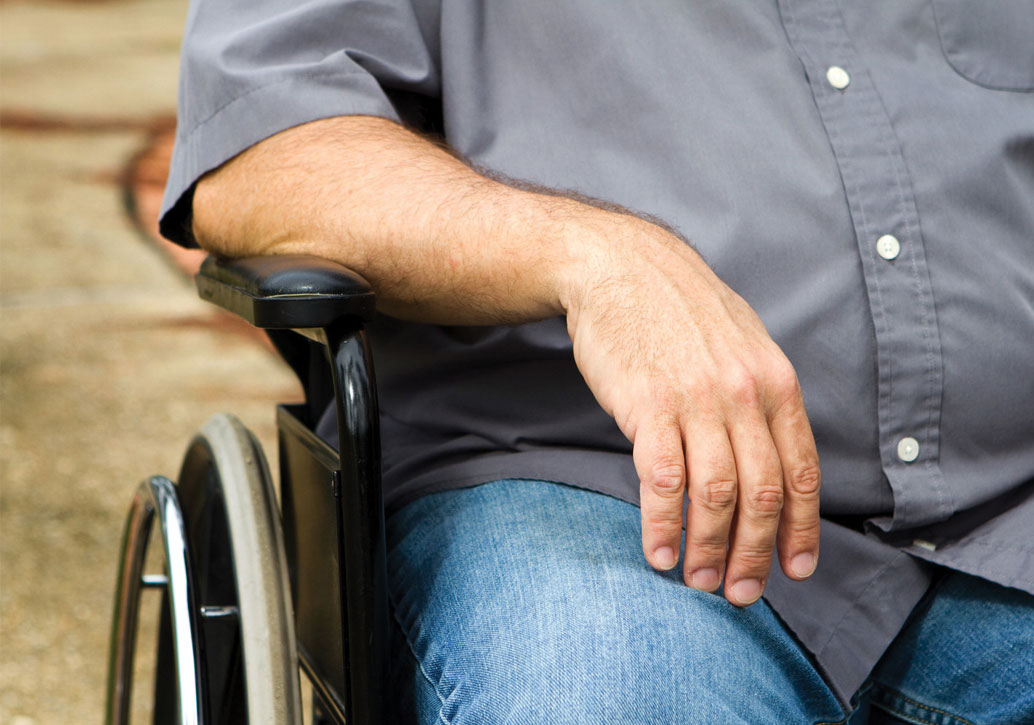By Laura Titus
For the past several years, the therapists from the Adult Wheelchair and Seating Programs at Parkwood Institute and Hamilton Health Sciences (HHS) have collaborated to advance clinical practice knowledge and skills. This has been accomplished through shared reflection of complex seating cases with collaborative clinical reasoning and also through contrasting and comparing service delivery and practice methods as a means to identify commonalities between the programs and optimize practices.
This collaboration has focused on advancing wheelchair and seating practice, through (1) the development of a standard outcome to monitor and evaluate current services, with the goal of working toward establishing service delivery targets, and (2) working collaboratively to integrate common terminology and measurements from a recently released best practice guide into their clinical documentation and practices. This paper will focus on these two methods of advancing clinical practice, as presented at the Innovations Conference in Toronto in November 2014.
Developing standard outcomes of service delivery
As health care continues to change, seating service providers are challenged to continue to be efficient. The Parkwood and HHS seating programs have found that evidence of efficiencies can be obtained through collecting data about how their clients progress through the wheelchair and seating process. The data collection parameters currently used by these two seating programs can be useful for therapists providing seating service as they relate to the phases of the wheelchair and seating service delivery process, from assessment to follow-up and discharge. The goal for both seating programs in collecting this data was to provide a means to:
• monitor access (wait list) and flow (length of processes);
• compare service delivery across time for each seating service, and across seating services;
• review overall program/service performance;
• evaluate program/service for quality improvement; and
• establish performance targets for each phase of service delivery.
The parameters currently used are based on a standard data collection tool that Parkwood’s Seating Program developed 10 years ago and continues to use. Date and frequency data are collected as outlined in Table 1 and input into a spreadsheet-style database for analysis. The demographic information and process phases are at the top along the X axis and the client identifier is on the left along the Y axis, thereby allowing the data to stay associated with the client. The initial rationale for developing this tool was the need to improve how we kept track of the progress of each client on the large caseload and thereby improve our ability to move clients more efficiently through the process and off the caseload list.
The database continues to be used as a caseload management tool, as it is a complete list of all active clients with demographic information as well as a record of their progress through each phase of the process. Regular analysis of the data has allowed us to examine each phase of the process and determine where we can affect our process efficiencies, where other stakeholders influence our length of process and where process factors are beyond our control.
Often as clinicians we have a subjective impression of our program’s efficiencies. The outcomes from these analyses have allowed objective measurements to substantiate these subjective feelings. For example, in 2013, the therapists on the Parkwood program felt their overall efficiency had improved, as they felt they had fewer trial and fitting appointments due to practice changes made in these two phases. However, the improvement was not reflected in the overall length of stay (assessment date to discharge date).
By examining the data, they confirmed that there were indeed reductions in the lengths of time at the trial and fitting phases, but it was offset by an increase in the length of time spent waiting for funding; therefore, the overall length of stay had not changed. Because the data collected was analyzed on a regular basis, there was evidence to support the therapists’ subjective feelings of improved efficiency of the seating program’s performance, in addition to evidence at a leadership level regarding program efficiencies and recognition that some aspects of certain phases such as funding were beyond the program’s control to change.
Data collected from this tool has also been used to establish performance targets for each phase of service delivery. Collating the data over a five-year period and establishing means and ranges established targets. At this time these targets are established only for Parkwood Institute, as the HHS Seating Program has just begun to collect data using these parameters.
These targets can be used to accomplish the following:
1. Gauge the effectiveness of service delivery on per-client basis by reflecting and being mindful of the number of appointments to date in comparison to the target.
2. Compare overall performance on a quarterly and annual basis, making adjustments to service delivery processes in response if indicated.
3. Monitor changes in phases that are influenced by other stakeholders.
4. Compare performance across different groupings such as diagnosis, or avenue of access to service (e.g., emergency referral, regular referral).
One of the goals over time, as HHS data collection grows, is to determine whether the data can be combined and whether collective targets can be established as a means to move toward the validation of service delivery targets for each phase of the process.
Collaborative standard terminology and measures
The second method of advancing clinical practice builds upon the theme of a common language, with the integration of common terminology and measurements into each therapist’s clinical practices. This method was based on recently released clinical practice guidelines for standard terminology and measurement for wheelchairs and seating.1 The impetus for this practice advancement was the result of a conference presentation by therapists from Toronto Rehabilitation Institute, University Health Network and Lyndhurst Centre (Toronto), which therapists from HHS and Parkwood seating programs attended. The therapists collaborated with the presenters to initiate the integration of these standards into clinical documents. It began with the revision of existing assessment forms to incorporate the common language and measurements from the guide. The original goal was to develop a single assessment form, but it quickly became apparent that the assessment form would need to be visually different to meet the unique needs within each of our programs.
This 300-page document developed by Waugh et al. is a condensed guide to the 1,000-page ISO guideline document. Opening Waugh’s document is intimidating in itself and Waugh advises reviewing Chapter 1 first to obtain a basic level of understanding; therefore, the therapists on each program started here. To make this rather large task manageable, we collaboratively decided to focus on one area at a time, with each program choosing the area most important to them. Parkwood chose to start with using the standards related to the body measurements during the physical assessment, and then progressed to using the standard terminology to describe posture in sitting and supine during the physical assessment. As we began to use the measurements, we changed the Associated language, progressing to changing the language used in describing posture during the assessment. HHS chose to start with the same standards, taking a similar approach to integrate them into their documentation and practice. However, they have also begun integrating some of the complex relative body segment angles to monitor change related to intervention. They have also begun to incorporate these measurements and terminology into their teaching with the McMaster OT students and Mohawk College OTA/PTA students.
Working together helps us set timelines, which then forced us to be accountable to make progress. We saw the value of making these changes by using a collaborative approach and continuing to move forward in incorporating these standards into our daily practices.
Conclusion
Collaborating with other seating service providers in this field offers many benefits. The therapists in these seating programs have found it effective to share the workload in planning and making changes and being accountable to each other. Collaboration has made the challenges of changing practice more fun as we share our learning, our successes and our not-so-successful attempts at change. We have had to be creative in how we collaborate, planning time for collaboration virtually, by email or meeting in person at conferences. We share our journey on the road to advancing practice with the hope that you will join us in this ongoing move toward advancing the provision of services for your clients.
Laura Titus, OT, and Susan Moir, OT, are occupational therapists at Parkwood Institute Adult Wheelchair and Seating Program in London, Ontario. Deborah Cox, OT, and Tricia Illman, OT, are occupational therapists at Hamilton Health Sciences Adult Wheelchair and Seating Clinic in Hamilton, Ontario.
References available on request.














